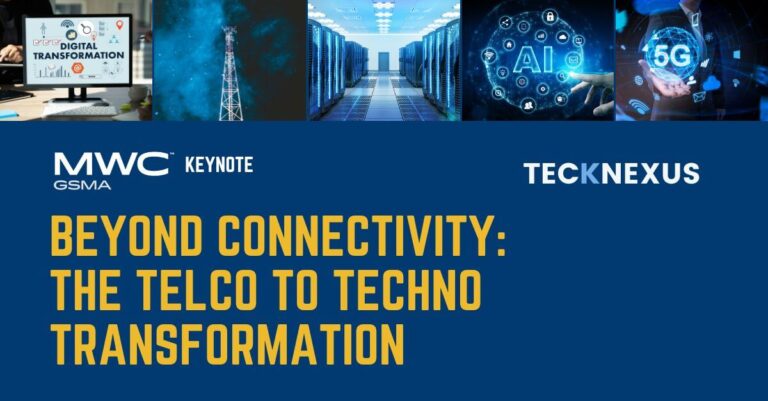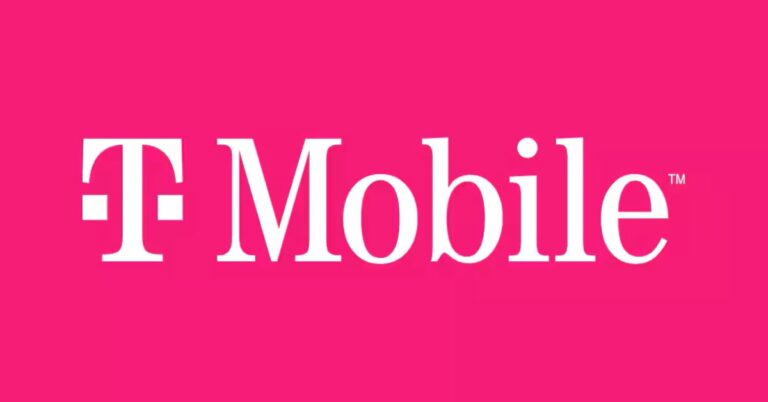Beyond Connectivity – The Telco to Techno Transformation
The telecom industry stands at a crossroads, where the fundamental role of mobile operators is rapidly evolving. Traditionally viewed as connectivity providers, telcos are now embracing a broader, technology-first approach. The convergence of AI, cloud computing, and 5G Standalone (5G SA) has accelerated this shift, prompting the transformation from Telco to Techco—a model where operators move beyond network infrastructure and evolve into comprehensive technology companies.
The keynote session at MWC 2025, moderated by Lara Dewar, CMO at GSMA, will feature prominent industry leaders such as Ralph Mupita, Group President & CEO at MTN, Hatem Dowidar, Group CEO at e&, and Makoto Takahashi, President & CEO at KDDI CORPORATION. They will share insights into the challenges and opportunities of this transformation and what it takes for telecom operators to successfully transition into the technology domain.
What’s Fueling the Telco-to-Techco Transformation?
The transition from telco to techco is driven by a fundamental need for telecom operators to remain competitive in an increasingly digital world. This shift is not just about new revenue streams but about redefining the role of telecom providers as integral technology enablers. Companies are moving beyond traditional infrastructure to provide advanced digital services, AI-driven solutions, and cloud-based innovations. The adoption of open networks and collaboration with hyperscalers is reshaping the industry, offering new possibilities for monetization and service delivery.
1. Monetization Beyond Connectivity
As connectivity becomes increasingly commoditized, telecom operators are facing rising capital investment costs and shrinking profit margins. To remain competitive and financially sustainable, they must diversify their revenue streams by:
- Offering digital services beyond pure connectivity, such as cybersecurity, cloud computing, and AI-powered solutions.
- Creating new monetization models, including Everything as a Service (XaaS) offerings.
- Leveraging Open APIs to facilitate partnerships with developers and enterprises for customized solutions.
- Expanding into fintech and digital payments, as seen with telecom-led financial services in emerging markets.
2. Maximizing 5G Investments
Telecom operators have heavily invested in 5G infrastructure, and the key to generating returns on these investments lies in adopting new business models:
- Network slicing for enterprise customers, enabling tailored services for industries such as healthcare, automotive, and manufacturing.
- Cloud-based solutions, enabling faster deployment and enhanced operational efficiencies.
- Private 5G networks for enterprises looking for secure, high-performance connectivity.
- IoT expansion, using 5G to power smart cities, industrial automation, and connected devices at scale.
3. Building an Open Ecosystem
The shift from telco to techco is not an isolated journey. Operators must cultivate partnerships with hyperscalers, software vendors, and industry stakeholders to drive innovation. By opening their networks to developers through GSMA Open Gateway APIs, telcos can foster a developer-first approach, unlocking new services and applications. Furthermore, collaboration with hyperscalers like AWS, Google Cloud, and Microsoft Azure can accelerate cloud transformation and service agility.
Overcoming the Hurdles in the Telco-to-Techco Shift
Despite the promise of the techco transformation, telecom operators face significant challenges in executing this transition successfully. The need for massive capital investment, the complexity of integrating AI-driven automation, and regulatory compliance hurdles pose barriers to change. Additionally, the traditional telco business model has been deeply rooted in legacy infrastructure, requiring a complete overhaul of processes and strategies to achieve seamless transformation.
1. Cultural and Organizational Shifts
Transformation is not just about adopting new technologies—it requires a shift in mindset. Traditional telcos have relied on rigid structures and long-term investment models, but transitioning into techcos demands:
- Agility and flexibility to innovate rapidly.
- A shift from infrastructure-driven models to service-oriented businesses.
- A culture of risk-taking and experimentation, mirroring that of tech companies.
- Upskilling and reskilling of the workforce, with a focus on software engineering, AI, and cloud expertise.
2. Investment in AI, Cloud, and Edge Computing
The foundation of the techco model lies in leveraging AI and cloud-native solutions:
- AI-driven automation to optimize network operations and enhance customer experiences.
- Cloud-native architectures to improve scalability and reduce costs.
- Edge computing to enable low-latency applications and support emerging use cases like smart cities and IoT-driven industries.
- Predictive analytics for customer engagement and network efficiency improvements.
3. Navigating Regulatory and Security Complexities
With increased digital integration, telcos-turned-techcos must address:
- Data privacy concerns and ensure compliance with global regulatory frameworks.
- Cybersecurity threats, necessitating investment in advanced security solutions.
- Regulatory shifts, as telecom services expand into digital and financial domains.
- Cross-border compliance challenges, as global digital services require adherence to varying international regulations.
Strategies for a Successful Telco-to-Techco Transformation
For telecom companies to successfully transition into techcos, they must embrace innovation across multiple fronts. The approach should include diversifying service offerings, developing robust digital ecosystems, and leveraging AI-driven automation for network optimization. Partnerships with hyperscalers and cloud service providers will also be crucial in providing scalable, cost-efficient solutions that enhance agility. Telcos must shift their mindset from being infrastructure-focused to becoming digital-first organizations that deliver high-value solutions for both consumers and enterprises.
1. Defining a Clear Vision
Operators must establish a well-articulated strategy that outlines their transition roadmap. This includes identifying:
- Key technology investments that will drive growth.
- New revenue streams beyond connectivity.
- Customer-centric services that enhance engagement and loyalty.
- Integration with digital platforms, ensuring a seamless experience across telecom and non-telecom services.
2. Building a Robust Ecosystem
A successful techco model requires collaboration across industries, including:
- Partnerships with hyperscalers (AWS, Microsoft Azure, Google Cloud).
- Engagement with independent software vendors (ISVs) and system integrators.
- Leveraging Open APIs to integrate with third-party solutions seamlessly.
- Developing multi-cloud strategies, allowing flexibility and service continuity across cloud providers.
3. Emphasizing AI and Automation
Telcos must harness AI for predictive maintenance, automated customer support, and intelligent network management. AI-driven tools can significantly reduce operational costs and enhance efficiency, accelerating the transformation journey.
4. Reimagining the Customer Experience
Techcos differentiate themselves by offering tailored solutions rather than generic connectivity services. By utilizing data analytics and AI, operators can deliver:
- Personalized digital experiences for both consumers and enterprises.
- Frictionless authentication solutions to enhance security.
- Smart industry solutions, such as AI-powered diagnostics in healthcare and predictive maintenance in manufacturing.
- Enhanced service bundles, integrating connectivity with cloud storage, cybersecurity, and digital media.
How Some Industry Leaders Are Thriving in the Techco Shift
Examining real-world examples of successful techco transitions provides key insights into what works and what doesn’t. The following companies serve as industry leaders in demonstrating how telecom operators can effectively pivot towards a technology-centric model by leveraging AI, cloud computing, and strategic partnerships.
1. MTN Group
MTN has embraced a platform-based approach, offering cloud, fintech, and AI-driven services across Africa. The company has invested in developing digital payment solutions, enterprise connectivity platforms, and AI-powered customer support systems.
2. e& (Formerly Etisalat Group)
e& has aggressively expanded into technology solutions, launching cloud computing services, digital identity solutions, and AI-powered analytics to cater to enterprises and governments.
3. Telefonica
Telefonica has successfully transformed its business by integrating cybersecurity, cloud, and IoT solutions, positioning itself as a tech-first company rather than just a connectivity provider.
What’s Next for Telcos Becoming Tech Companies?
The telco-to-techco transition is not a one-time transformation but an ongoing evolution. As AI, 5G, and cloud technologies continue to advance, operators must remain agile, continuously exploring new business models and services. By 2030, the telecom industry is projected to generate over $500 billion in revenue from tech-first solutions, reinforcing the importance of this shift.
The Telco-to-Techco Revolution: What Comes Next?
MWC 2025’s keynote on Beyond Connectivity: The Telco to Techco Transformation highlights the most significant paradigm shift in telecom history. Operators worldwide must rethink their business models, embrace emerging technologies, and build strategic partnerships to remain relevant in the digital economy.
The transition requires bold leadership, strategic investment in AI, cloud, and automation, and an unwavering focus on customer-centric solutions. By taking decisive action today, telcos can secure their place as the technology leaders of tomorrow.
Join the conversation at MWC 2025 and witness firsthand how leading operators are spearheading this transformation, paving the way for a more connected, intelligent, and technology-driven world.
Session Moderators
Lara Dewar | GSMA, CMO
Session Speakers
Ralph Mupita | MTN, Group President & CEO
Hatem Dowidar | e&, Group CEO






















